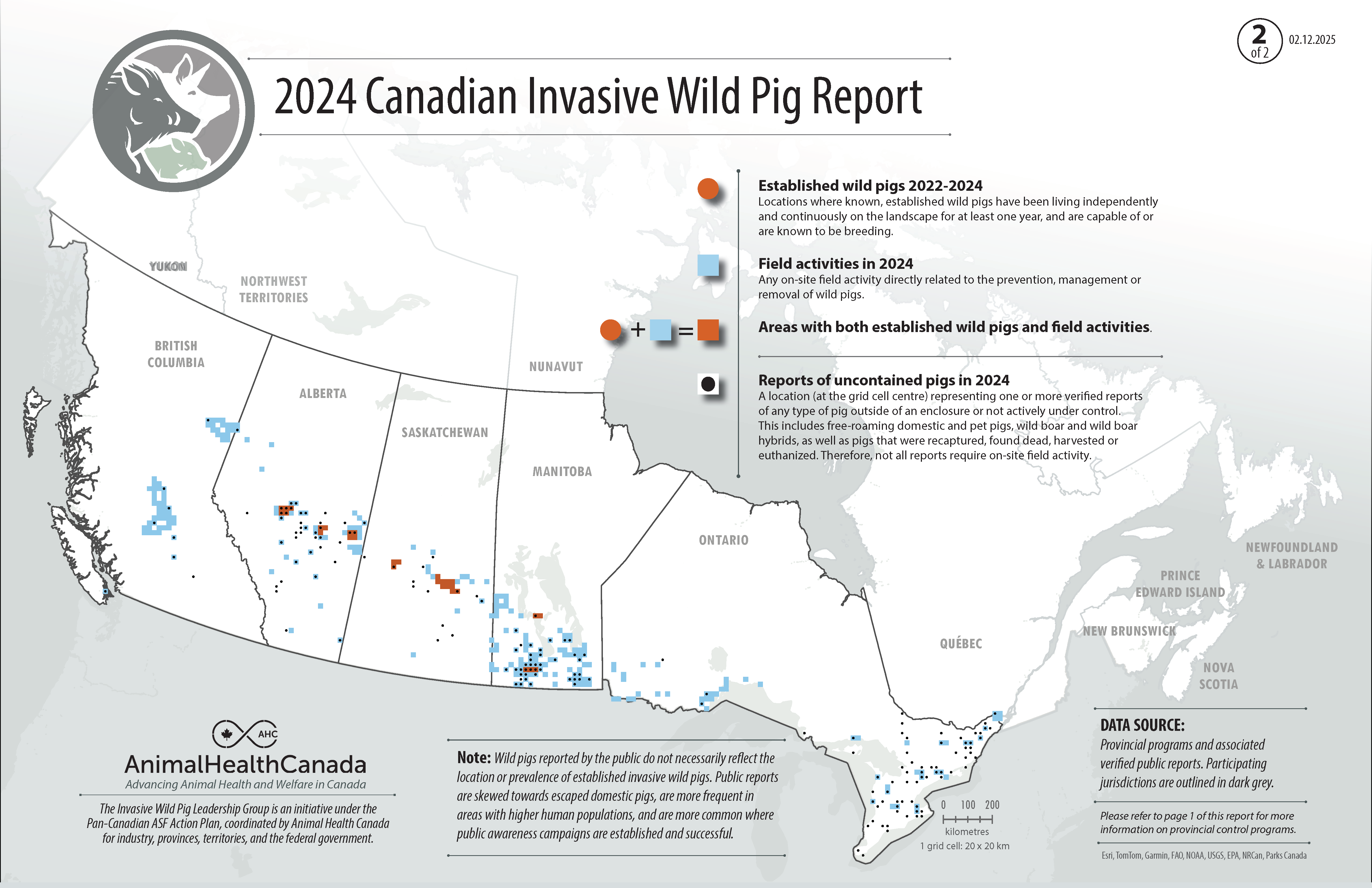Overview
Canada’s Invasive Wild Pig Strategy defines a wild pig as any animal of the species Sus scrofa that is not contained or under the physical control of any person or is otherwise roaming freely. This includes a pig of any type (domesticated pigs, Eurasian wild boar, and hybrids) that has escaped, been released from containment, or is no longer on the owner’s property and is free roaming. It includes any pigs that were born in the wild. Wild pigs are also known as invasive wild pigs, feral swine, feral hogs, feral pigs, wild hogs, wild boar and wild boar at large.
Wild pigs cause significant damage and destruction to ecosystems, disrupt crops and native vegetation and can carry diseases that are infectious to people, wildlife, and domestic animals. Some of the diseases that wild pigs can carry could disrupt Canada’s export-driven livestock industry. The regulatory framework within each province or territory is unique for wild pigs, pigs at large, wild boar farming, wild boar hunting, as are the agencies and control program that have authority to address wild pigs.
Prevention, management, and removal of wild pigs requires collaboration to eliminate their impacts on ecological, agricultural, cultural and social assets.
Canadian Invasive Wild Pig Report
The Canadian Invasive Wild Pig Reports show locations of wild pigs and where field activities are focused. The map will be refreshed regularly to support the prevention, management and removal of wild pigs. The map is an initiative under Canada’s Invasive Wild Pig Strategy. The strategy’s vision is eradication of invasive wild pigs in order to eliminate their ecological, agricultural, cultural and economic impacts.
2024 Canadian Invasive Wild Pig Report now available

Click on image to enlarge and download PDF
Previous reports:
If you wish to learn more about invasive wild pigs in Canada and the impact they have on agriculture, ecosystems, cultural resources, and the economy, visit the Wild Pigs Canada website.

